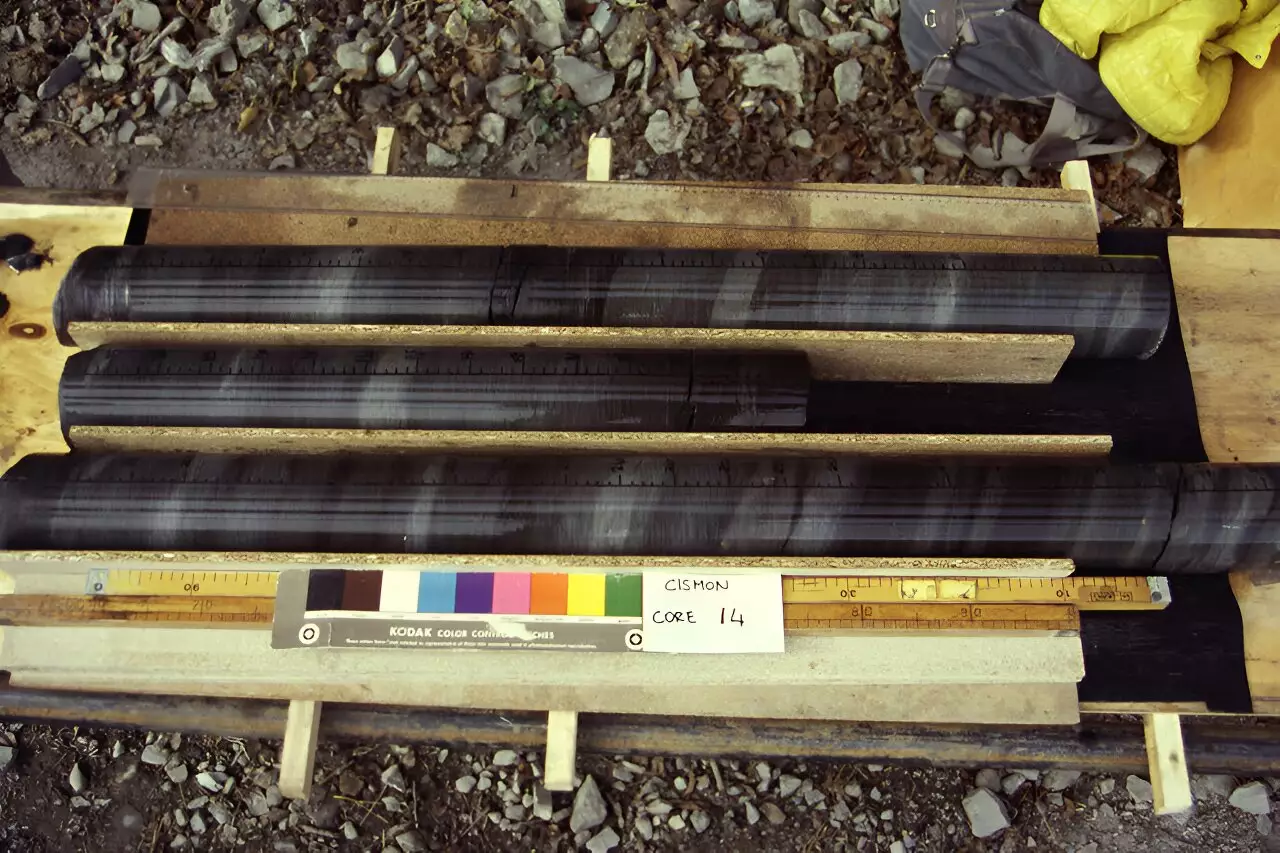The interactions between climate change and ocean health are increasingly becoming a focal point of scientific inquiry, particularly as humanity grapples with its impacts on the planet. Recent research published in *Nature* sheds new light on a period of Earth’s history over 120 million years ago, providing crucial insights into potential future scenarios regarding ocean deoxygenation, a phenomenon that threatens marine biodiversity and human livelihoods.
Conducted by a team led by Kohen Bauer at Ocean Networks Canada, the study reconstructs ancient oceanic environments during the Early Cretaceous era, a time marked by significant volcanic activity and concomitant carbon dioxide emissions. By analyzing sedimentary rock samples archived at the University of Milan, the researchers created a high-resolution account of environmental changes that transpired between 115 and 130 million years ago. This analysis revealed a clear correlation between volcanic carbon emissions and a sharp rise in atmospheric CO2 levels, which ultimately led to a global climate threshold being crossed.
The results illustrate that once this tipping point was exceeded, ocean deoxygenation became widespread and persistent. In Bauer’s words, the Earth remained in a warmer state for over two million years post-event—a concerning implication as contemporary climate models hint at a worrying trajectory under current anthropogenic CO2 emissions.
The relevance of this ancient episode is stark today. As atmospheric carbon levels continue to rise due to human activity, scientists warn that we might soon breach similar thresholds that could lead to acute oceanic oxygen depletion. Bauer emphasizes that while today’s CO2 concentration is lower than during the Early Cretaceous, the current rate of emissions far outpaces any volcanic release observed throughout the past 500 million years. This rapid increase not only augurs severe repercussions for marine life but also poses significant risks to human health and ecosystems reliant on ocean stability.
Should we approach the tipping point akin to that of the Early Cretaceous, the results for biodiversity could be catastrophic—species loss and ecosystem collapse may follow. This creates an urgent call for climate action and conservation strategies designed to avert or mitigate such a fate.
Navigating Toward Recovery: Nature’s Mechanisms
One intriguing aspect of the geological record is how the Earth eventually revived its oxygen levels after severe deoxygenation. The study indicates that natural processes can restore equilibrium, albeit over extended periods—over one million years in this case. The reoxygenation coincided with a decline in atmospheric CO2 levels below the critical threshold through a natural climate feedback mechanism known as silicate rock weathering. This process plays a pivotal role in the long-term carbon cycle and serves as nature’s means of regulating CO2 levels and stabilizing the climate.
Bauer notes the significance of this natural feedback loop, stating that it illustrates how Earth can recover from extreme climatic conditions over geological timescales. It is a reminder of the ability of Earth’s systems to achieve a degree of self-regulation, even if it requires immense time spans.
The Importance of Historical Context in Modern Climate Science
The study not only enriches our understanding of ancient climate dynamics but also posits valuable frameworks for contemporary environmental discussions. According to senior author Sean Crowe, utilizing empirical historical data can greatly enhance our comprehension of the complex relationships linking climate warming, ocean deoxygenation, and their far-reaching implications for the biosphere. This perspective is critical for policymakers and scientists alike in formulating effective strategies to combat current changes.
As aquatic ecosystems increasingly face the threat of oxygen depletion, the research aligns with assertions in related studies that highlight deoxygenation as a critical planetary boundary. The research underscores the need for an integrated approach to managing Earth’s systems, particularly as we weigh the thresholds that should not be crossed to maintain ecological health and climate stability.
In light of these findings, the question becomes not just one of awareness but of action. The research team’s insights reinforce the need for timely interventions aimed at reducing human-induced emissions and fostering ecological resilience. Efforts such as those by global networks—like the UNESCO Global Ocean Oxygen Network—and the real-time monitoring provided by Ocean Networks Canada facilitate a better understanding of current ocean conditions and can help inform both scientific pursuits and public policy.
As we look to the future, learning from Earth’s past holds vital clues to navigate the challenges of climate change and ocean health. By heeding the lessons of the Early Cretaceous, we can aspire to avert a similarly unforgiving fate for our planet.


Leave a Reply